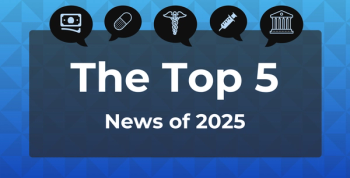
Top 5 Most-Read Population Health Articles of 2024
From drug shortages to the approval of a nasal spray flu vaccine, the top population health stories explored critical challenges and advancements impacting the US health care landscape.
The top population health news of 2024 included efforts to reduce out-of-pocket drug costs, new vaccine approvals, and treatment strategies for opioid use disorder (OUD). Other key stories delved into the implications of Robert F. Kennedy Jr’s nomination for HHS Secretary and the ongoing struggle with essential drug shortages across the country, including attention-deficit/hyperactivity disorder (ADHD) medications and insulin.
Here are the 5 most-read population health articles of 2024. You can check out all our population health news
5. Medicare High-Value Drug List Model Could Lower Out-of-Pocket Costs for 4 in 10 Beneficiaries
The proposed Medicare High-Value Drug List Model, also known as the Medicare $2 Drug List, could have reduced out-of-pocket costs for 38% of beneficiaries in 2021. By capping costs at $2 per month for 150 generic drugs, the model would have offered median annual savings of $11, though only 1.5% of beneficiaries would save $100 or more annually. Researchers emphasized the potential benefits of more predictable out-of-pocket costs for improving medication adherence and highlighted the need for more policies targeting high-cost brand-name drugs to further reduce spending disparities.
4. FDA Approves First Self-Administered Nasal Spray Flu Vaccine
In September, the FDA approved FluMist (AstraZeneca) for self-administration by adults aged up to 49 years and for caregiver administration for children aged 2 to 17 years. This nasal spray flu vaccine, containing weakened live influenza virus strains, offers a convenient and flexible alternative to traditional flu shots. Usability studies confirmed the vaccine's safety and efficacy when self-administered, providing a new option to enhance accessibility and improve vaccination rates.
3. Methadone Associated With Lower Risk of Treatment Discontinuation in Opioid Use Disorder
A population-based study revealed that methadone was associated with a lower risk of treatment discontinuation compared with buprenorphine/naloxone in patients with OUD. The analysis, conducted in British Columbia, found that patients taking methadone remained in treatment longer (median 66 vs 30 days) and had lower discontinuation rates (81.5% vs 88.8%) than those taking buprenorphine/naloxone. According to experts, these findings highlight the need to reconsider OUD treatment guidelines, especially as fentanyl use rises, to better support treatment retention and outcomes.
2. 5 Health Policy Stances of Robert F. Kennedy Jr
President-elect Donald Trump nominated Robert F. Kennedy Jr as HHS Secretary in November, signaling a potential shift in US public health policy. A prominent antivaccine activist and opposer to water fluoridation, 3 of Kennedy’s other stances include a focus on improving food quality, combating chronic disease, and re-evaluating FDA policies. With his lack of experience in public health policy raising concerns among experts, Kennedy’s nomination introduces uncertainty in health policy, with Senate hearings anticipated for his confirmation.
1. 5 Essential Drugs Currently Facing Shortages
Although the number of US drug shortages decreased to 277 as of September 2024, many critical medications remain scarce, with half of all shortages lasting over 2 years. Key affected drugs include ADHD medications, pain treatments like morphine and fentanyl, and chemotherapy agents such as methotrexate and carboplatin. Insulin and diabetes/weight loss drugs like Semaglutide have also been facing intermittent availability, creating challenges for patients who rely on them. Ongoing supply chain issues, manufacturing delays, and increased demand continue to exacerbate these shortages.
Newsletter
Stay ahead of policy, cost, and value—subscribe to AJMC for expert insights at the intersection of clinical care and health economics.









































